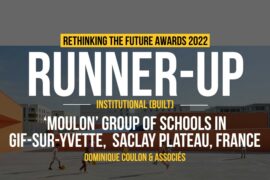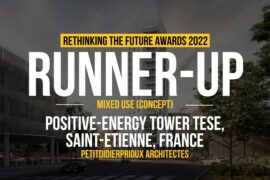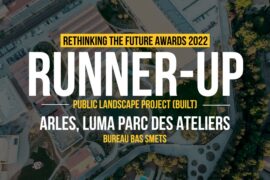Description:
PREVIOUS STATE: The little Italian village of Povegliano, near Treviso, hadn’t a own square in his territory before the construction of Piazza Municipio. In 2006 the major announced a competition to choose the best project for their public places because the citizens need own space to imagine themselves like a community.
Project name: Piazza Municipio of Povegliano (TV), Italy
Completion time: 2009
Location: Povegliano (TV), Italy
Area: 5986 mq
Designer: MICROSCAPE architecture urban design AA
Photographer: © Francesco Castagna
Client: City of Povegliano
Award name:
- “EUROPE 40 UNDER 40 2010” (winner)
The European Centre for Architecture Art Design and Urban Studies and The Chicago Athenaeum - “27/37 rassegna internazionale giovani architetti italiani” – 2010 (selected)
Ordine degli Architetti di Roma – mostra al Padiglione Italiano all’Expo di Shanghai 2010 - “Premio per l’urbanistica e la pianificazione territoriale Luigi Piccinato” – 2009 (selected)
Regione Veneto
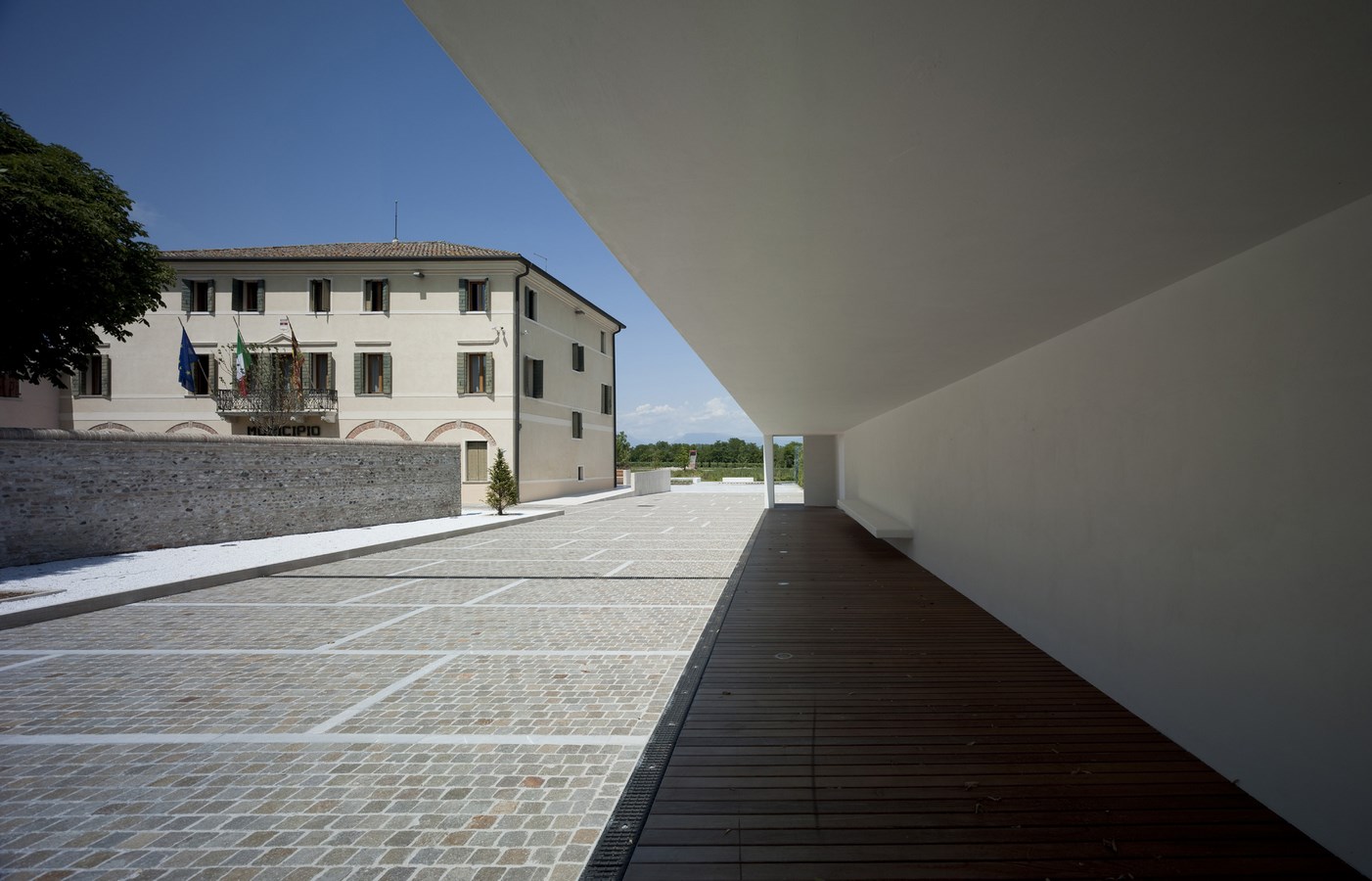
AIM OF THE INTERVENTION: The intervention is around the Town hall and it relates to the construction of square with cycle-pedestrian circuit and new street. In addition there are new gardens.

DESCRIPTION OF THE INTERVENTION
The design methodology on which the project is based makes the system flow relational its backbone. The operation involved both the pattern of low intensity (cycle-pedestrian circuit) the identification of a new road-connecting carriage. The green areas allow access from the new square’s “public area” to the private residential area (north). The different space conformations create both continuity and give a special mark to the area, which is still part of heavily agriculture-influenced territory. The architectural-scale elements, working by repetition _ difference with the general system, have been interpreted as analog “figures” relying both of the site’s specific memory references and archetypes of public urban space.
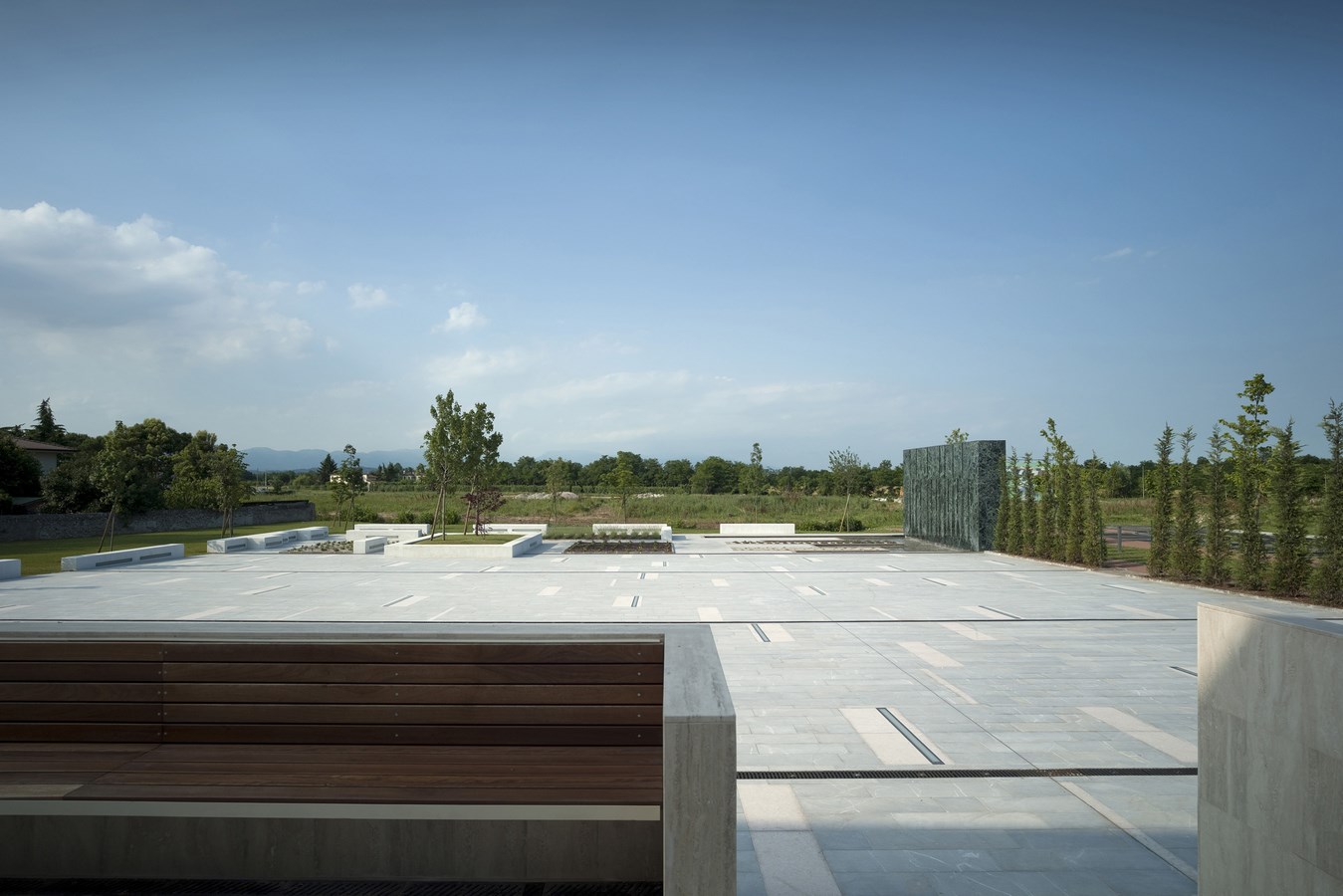
The floor plan of the square area to the north becomes “active” thanks to the ever-changing LED lighting RGB signal, which by randomly inserting slabs of stone (Piasentina and Prun) generates a continuous light surface. The eastern boundary of public space is delegated to a metamorphosis system that is transformed from concrete reinforced shaved curtain into hedges, ending up in the fountain of green marble Issorie. The entrance walkway houses the Public Bulletin Board and is covered by a system of horizontal photovoltaic panels which are highly efficient (grid connected). This gives public area an independent energy source. The flooring of the entrance is in Ipè wood, suitable for outdoors, and within the flooring there are white LED spotlights.
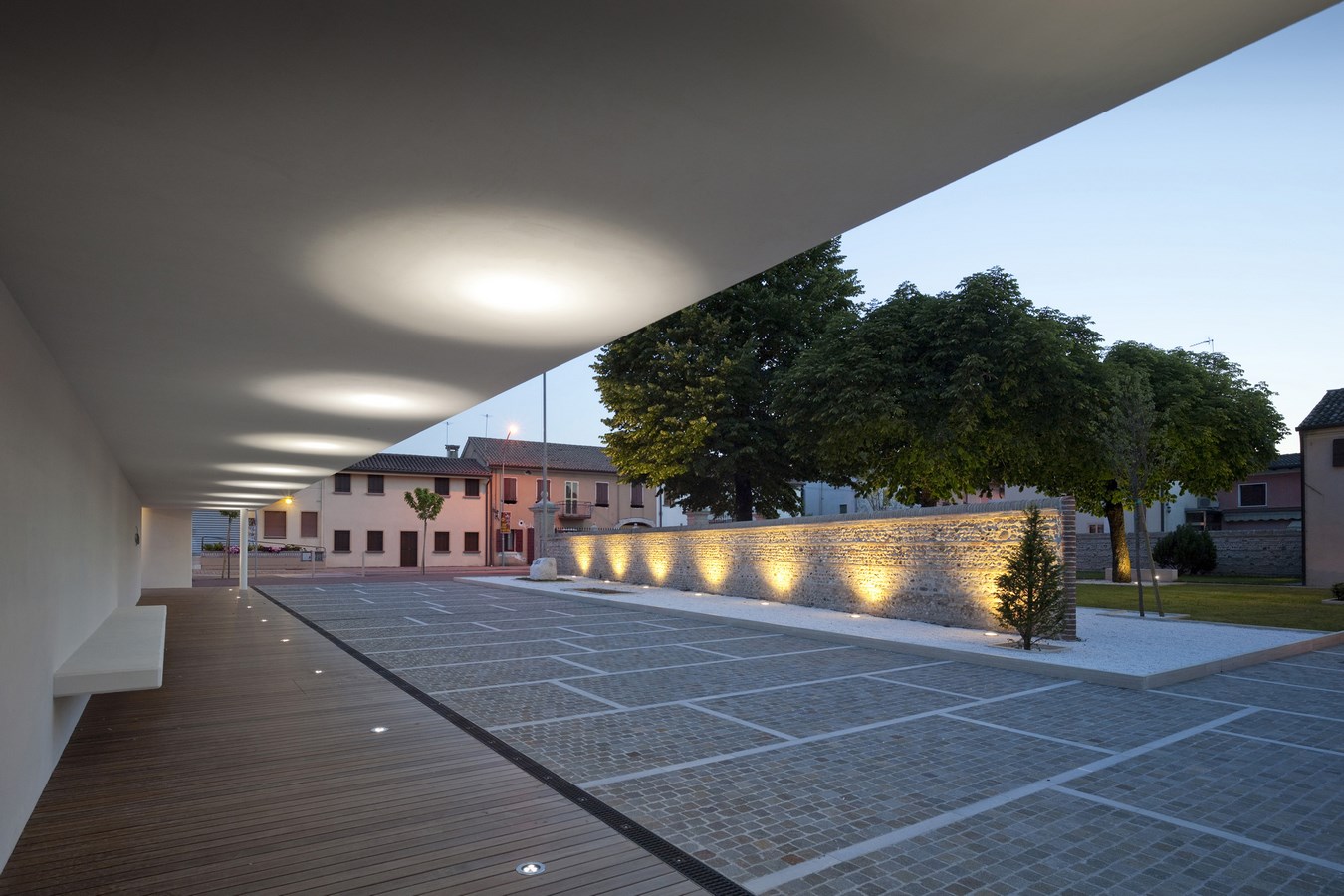
We have paid special attention to the balance between light sources and radiation, while avoiding any problem of light pollution. The lighting project is composed of 5 integrated systems: 1. Street lighting with metal halide source; 2. Direct illumination from the Town hall with metal halide source; 3. Lighting of the relational garden appliances recessed, fluorescent source with anti-glare filter; 4. RGB LED system programming unit installed in the council hall of the Municipality carpets with bright iridescent light, the entrance walkway with appliances and white LED source. 5. Lighting of the pool of the fountain with white LED source. The green elements connote the urban identity of the space, determining the physical boundaries and perspectives of the project. We identify 3 sub-systems: •
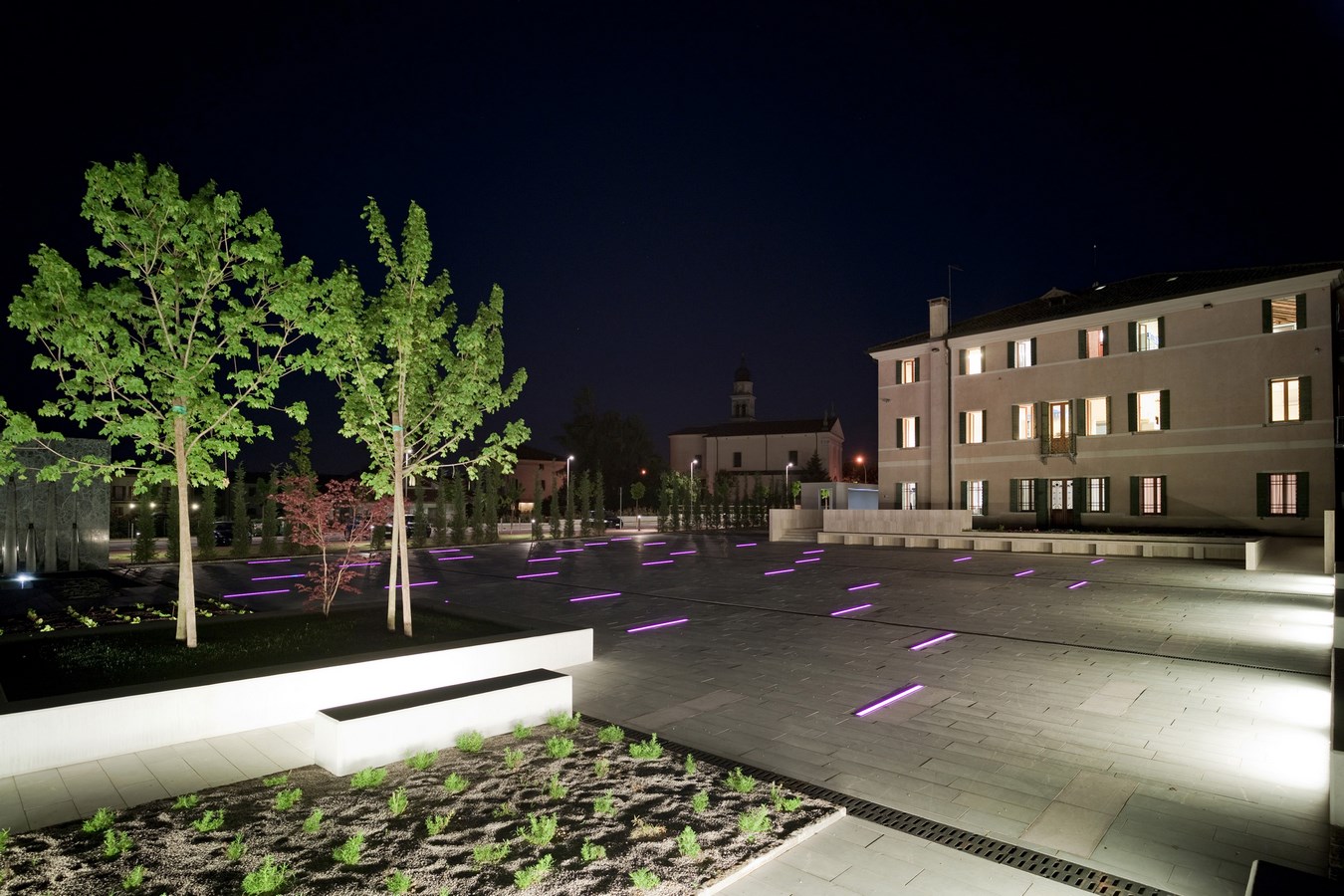
Delimitation of the square to the north and defining themselves through a wide margin and deep green structure consisting of vegetable plantings of maples, oaks and chestnuts, it stands as boolean operation of overlap-integration with the linear park with which it is interconnected by pathways south-north. • Relational garden. The garden maze is shaped beds of different sizes, the small garden theme is offered to distance and multi-sensory perception (there are flowers and herbs), there is the water fountain vertical. • Garden of stone.
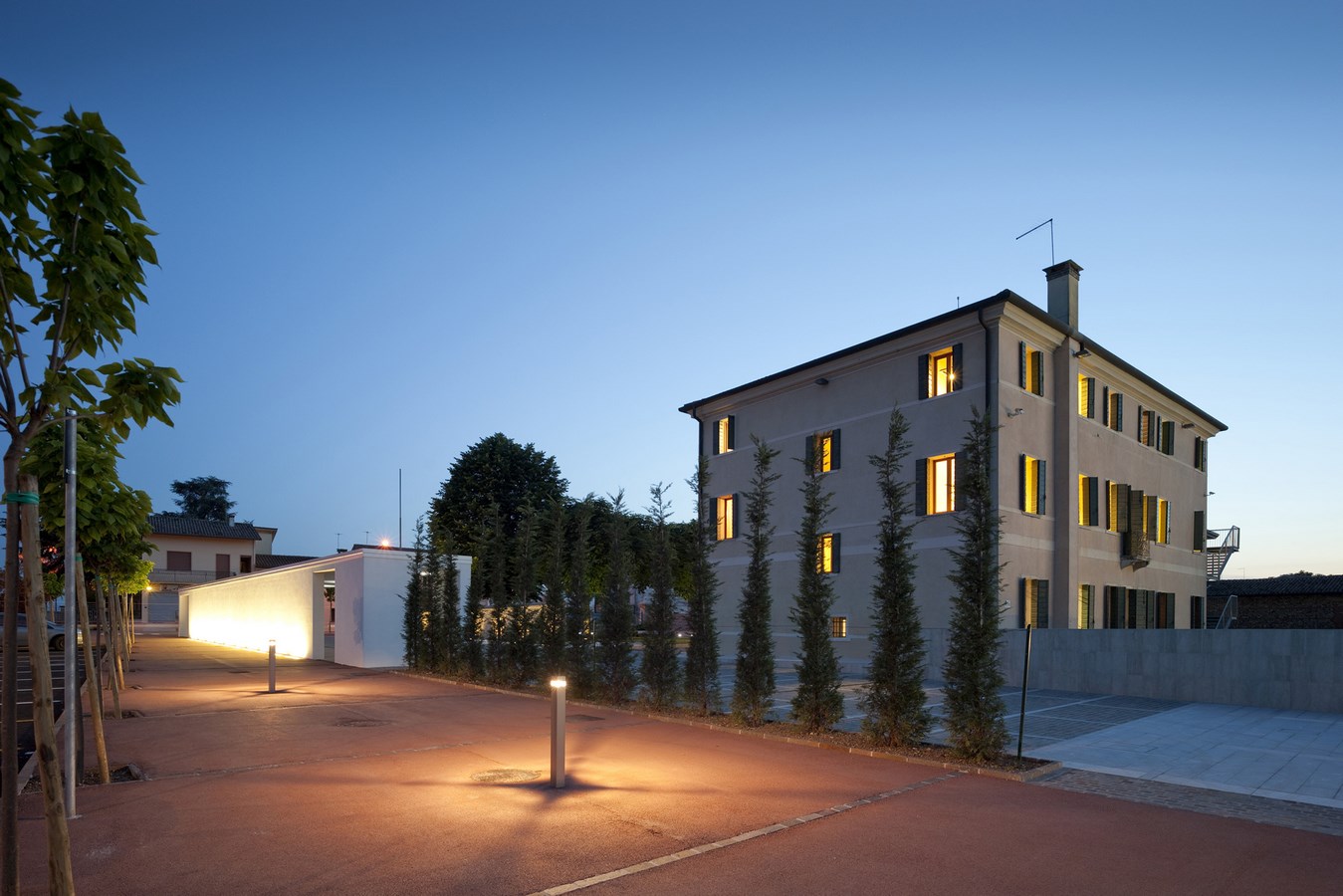
The current “garden” overlooking the town hall is transformed, while maintaining the most important green elements, the floor plan which incorporates within itself the historic fence wall, is partly bound to lawn with beds of rhododendrons and Judas trees, new planting, and in part with granulated white marble from Carrara.
EVALUATION The design clearly takes its cue from the urbanized surroundings on three sides of the square. The fourth side borders a piece of farmland, so that the square becomes a “mediator” between old and new, urban and rural, nature and high tech. With large stone surfaces, water features and vegetation, the new square offers a bit of everything, making it a perfect spot to while away some time, relax and socialize. Only at sunset does the square show its other face; conventionality is swept aside to make room for a playfulness. At night, the paving of the square becomes an ever-changing “carpet” of light, courtesy of randomly distributed elongated LED light boxes. The programming is geared to day/night and produces a range of different flashing light patterns. In addition, the RGB LEDs can assume all the colours of the rainbow. Finally, the square becomes a point of reference within the urban context and the community.

 MICROSCAPE architecture urban design AA: Has been founded in Lucca in 2006 by two brothers: Patrizia Pisaniello & Saverio Pisaniello – deals with architectural and urban planning; architectural research and professional practice develops on levels of scalability, in the investigation of the relationship between nature and construction in the particular dimension of collective spaces. In 2010, MICROSCAPE has been selected to exhibit his work at Italian Pavilion Expo Shanghai and they won The Europe 40 Under 40. Since 2012 the graphic research of MICROSCAPE is part of NAM Nuovo Archivio Multimediale of the National Academy of San Luca, Rome. They teach at University of Florence and IED Rome. They won these prizes: <Premio Architettura Toscana 2017> and the <CiTy_Brand&Tourism Landscape Award 2018 category CITY LANDSCAPE: Landscape redevelopment of the fringe territories sez. A>. In 2018, they have been exhibited their work to the Italian Pavilion at the 16th International Architecture Exhibition of the Venice Biennale. Archipelago Italy.
MICROSCAPE architecture urban design AA: Has been founded in Lucca in 2006 by two brothers: Patrizia Pisaniello & Saverio Pisaniello – deals with architectural and urban planning; architectural research and professional practice develops on levels of scalability, in the investigation of the relationship between nature and construction in the particular dimension of collective spaces. In 2010, MICROSCAPE has been selected to exhibit his work at Italian Pavilion Expo Shanghai and they won The Europe 40 Under 40. Since 2012 the graphic research of MICROSCAPE is part of NAM Nuovo Archivio Multimediale of the National Academy of San Luca, Rome. They teach at University of Florence and IED Rome. They won these prizes: <Premio Architettura Toscana 2017> and the <CiTy_Brand&Tourism Landscape Award 2018 category CITY LANDSCAPE: Landscape redevelopment of the fringe territories sez. A>. In 2018, they have been exhibited their work to the Italian Pavilion at the 16th International Architecture Exhibition of the Venice Biennale. Archipelago Italy.
